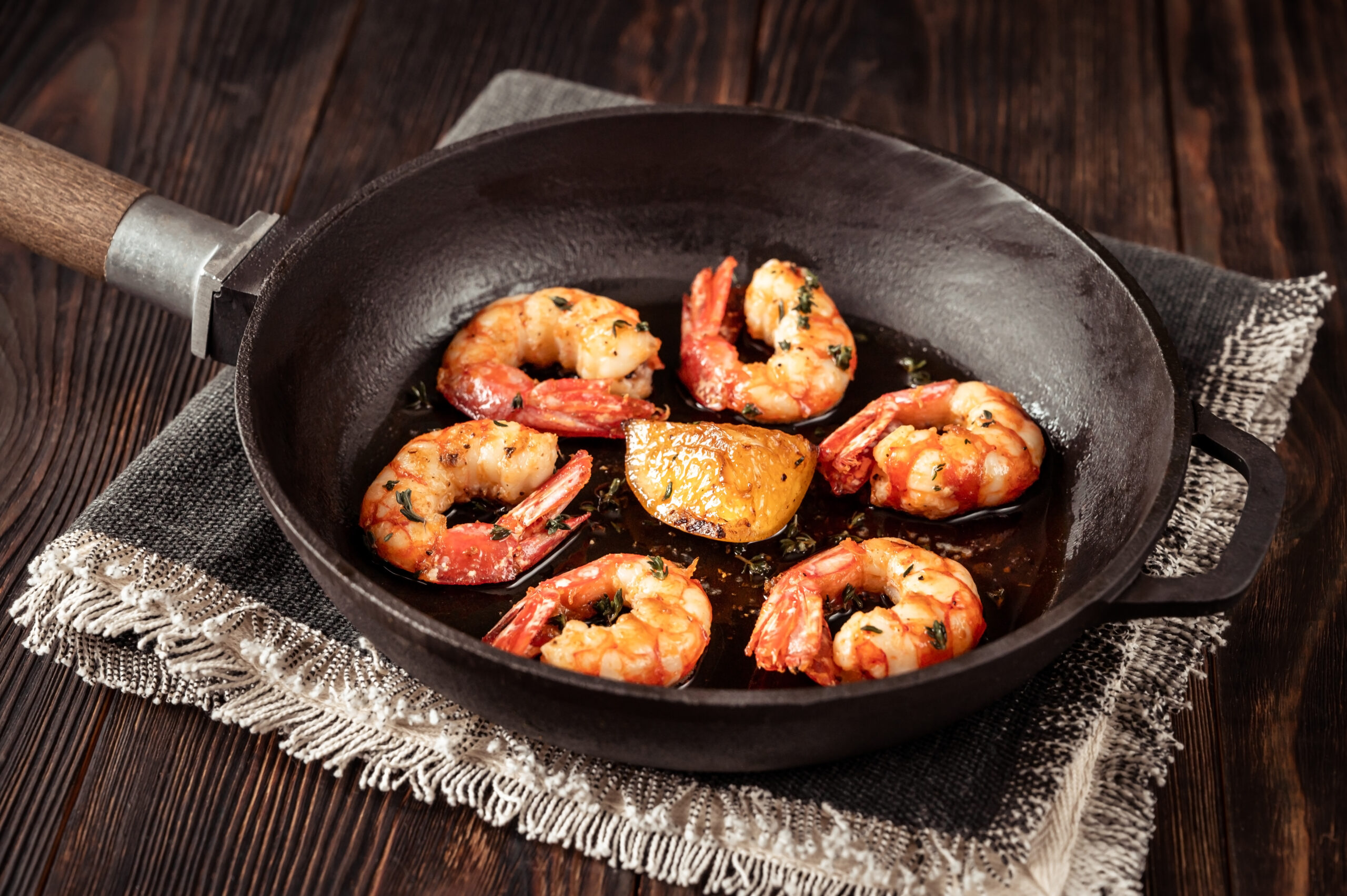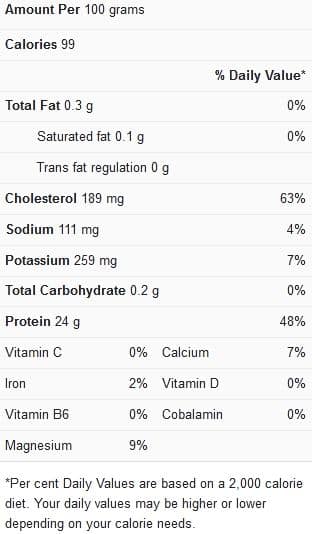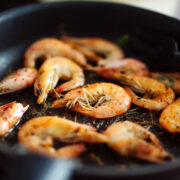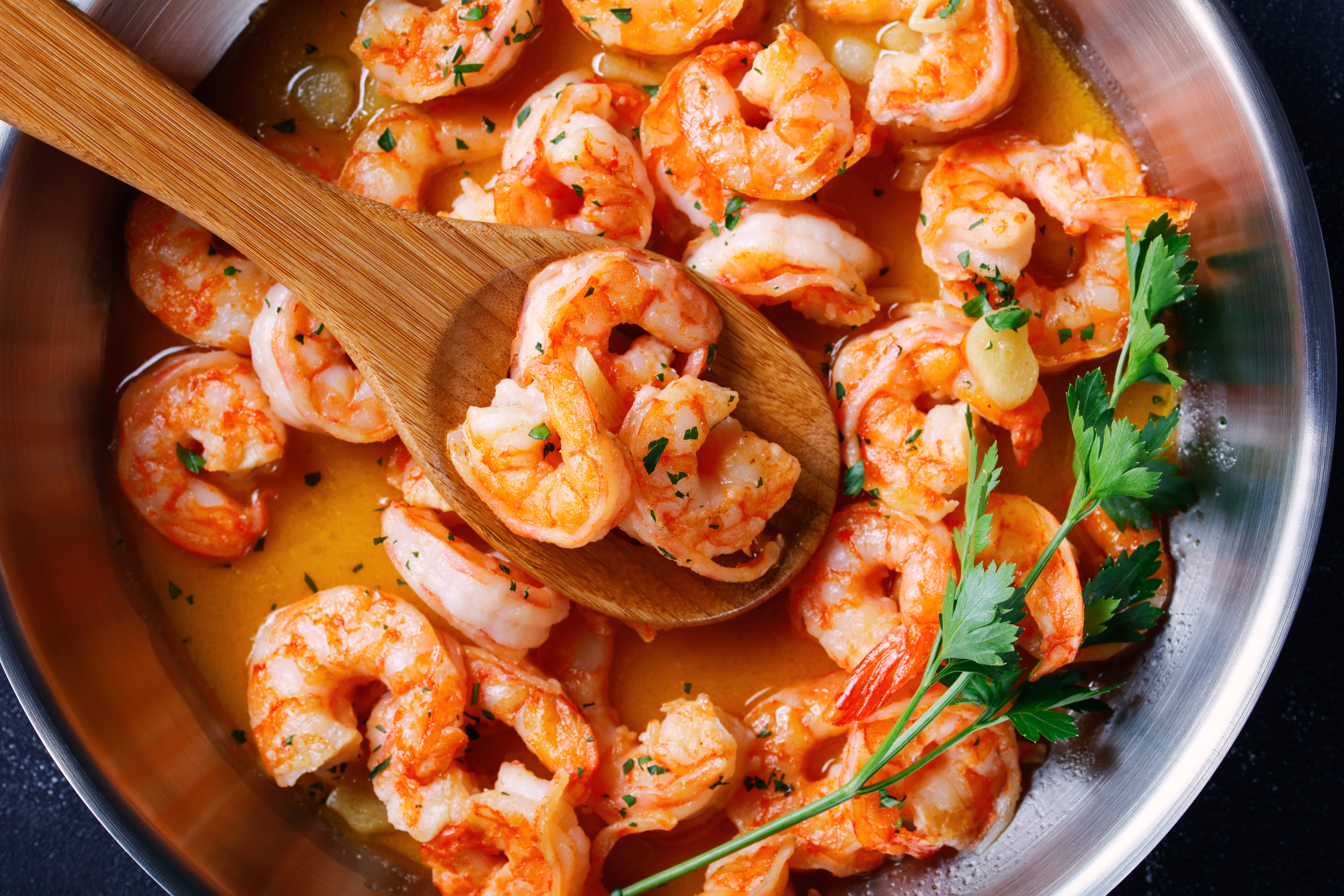There’s really nothing like nicely cooked shrimp; the flavor is incredible, plus shrimp is a healthy source of protein, so you win on both fronts. Cooking shrimp, especially in a skillet, is also simple and uncomplicated if you know how to do it correctly. If not, then you’ve come to the right place.
In this article, we’ll show you the ideal way to make pan-fried shrimp recipes, and you’ll ultimately crave more after you taste the results. Just make sure to pay attention to all the basics we’ve covered, as well as the extra suggestions for amazing results.

Shrimp nutrition facts

Tips for cooking shrimp in a skillet
These helpful tips we’ve outlined below will help you make sure you get tasty results with your shrimp recipes, so pay close attention:
Buying shrimp – Most shrimp available for sale are frozen shortly after getting caught. As a result, the shrimp that taste freshest should typically be found in the freezer section rather than at the supermarket fish counter. Because shrimp is perishable, and you don’t know how long the thawed variety has been thawed for, you should never buy shrimp that is not in a frozen state.
Thawing frozen shrimp – You can thaw frozen shrimp right before cooking if you buy it frozen. You should never let your shrimp thaw in the fridge overnight since it builds up too much histamine that way. Histamine is the chemical that causes sneezing and watery eyes, as well as mild to severe intestinal problems, so you may want to avoid that.
What should you do instead? Remove the shrimp from the container, place it in a basin or colander in the sink, and cover cold water for 5 minutes. Toss the shrimp around every now and then to ensure they are all exposed to the chilly water. When the shrimp are no longer frozen solid but soft, flexible, and somewhat translucent, you know they are thawed and ready. Doing this should not take up a lot of your time. Afterward, pat the shrimp using a paper towel until it gets dry.
How to tell when shrimp is ready to eat – It is important to note that shrimp cook rather quickly, so they might overcook in a wink if you take your gaze away from them. Overcooked shrimp develop an “O” shape, whereas undercooked shrimp make a wide and flexible “U” shape. Shrimp cooked to perfection are typically pink with brilliant red tails shaped like a “C.” This is how you’ll know that they’re ready to eat. They’re odd-looking and unpleasant one minute, and then they’re hard to resist eating straight out the pan the next.
Cooking shrimp in a skillet
The process of cooking shrimp in a skillet is pretty straightforward and easy, provided that you know what you’re doing. If you’re not sure, then these easy steps should guide you straight to great-tasting results:
- To begin, place the shrimp in a mixing bowl and coat them with the seasoning mixture. Make sure the shrimp are properly coated in sea salt, Italian seasoning, paprika, and red pepper flakes by mixing thoroughly. Shrimp has a moderate flavor that absorbs the flavors of anything you serve them with.
- After that, turn on the stove and melt the butter or oil over medium-high heat. As the oil heats up, it’s a good idea to tilt the pan to coat the bottom.
- Add the shrimp to the hot pan once the butter has melted or the oil has moved around freely. Warm your pan a little longer the next time if they don’t sizzle on contact.
- Cook for 2-3 minutes on each side, flipping only once when you’re halfway through. This should normally take 4 to 6 minutes, depending on the size of your shrimp and how many you have in the pan at a time.
- Finally, transfer to a serving platter. Seared shrimp can be served right away as desired.
View this post on Instagram
Cooking Time for Shrimp in a Skillet
Follow these timing guidelines when cooking shrimp in a skillet:
| Cooking procedure | Cooking time |
| Running shrimp under cold water to thaw them | 5 minutes |
| Cooking thawed shrimp in a skillet | 4 to 5 minutes, depending on shrimp size and the quantity in the pan |

Quickly cooked stovetop shrimp (4 servings)
Ingredients
- 1 pound of raw medium shrimp (17 to 21 pieces per pound), deveined and peeled, with their tails removed if preferred
- 1 tablespoon of olive oil or butter, or a mix
- Kosher salt
- Freshly ground black pepper
Instructions
- If the shrimp you want to cook is frozen, run cold water over them in a colander in the sink for about 5 minutes. Toss the shrimp around every now and then to ensure that they are all exposed to the chilly water.
- When the shrimp are no longer frozen solid but soft, flexible, and somewhat translucent, this means they are thawed and ready. It will just take a few minutes to carry this out. Using paper towels, pat the shrimp dry.
- In a large frying pan, heat the oil or butter over medium-high heat. Tilt the pan to coat the bottom of the pan as the oil heats up or as the butter is melting.
- Add the shrimp when the butter has melted and the oil is easily moving about the pan. When they come into contact with each other, they should sizzle (if not, you may need to warm your pan a little longer next time).
- Season the shrimp with salt and pepper. Make sure to add generous amounts. At this point, you can add any extra ingredients you have on hand, such as chili powder, curry powder, or a dash of harissa.
- At the beginning, the shrimp will appear gray and translucent, but as they cook, they will turn pink and opaque. The tails will turn a bright crimson color as well. Cook until the shrimp flesh is completely pink and opaque, making sure to stir occasionally, and ensuring that there are no visible gray parts. This normally takes 4 to 5 minutes, depending on the size of your shrimp and how many you have in the pan.
- You can serve your sautéed shrimp over pasta or grains right away. Whatever leftover shrimp you have is also delicious in salads or other cold recipes.
This recipe for shrimp in a skillet delivers palate-stimulating results, and you’ll definitely want to try it again. If you need more ideas on ways to cook shrimp in a skillet, then you may be interested in this video recipe.
